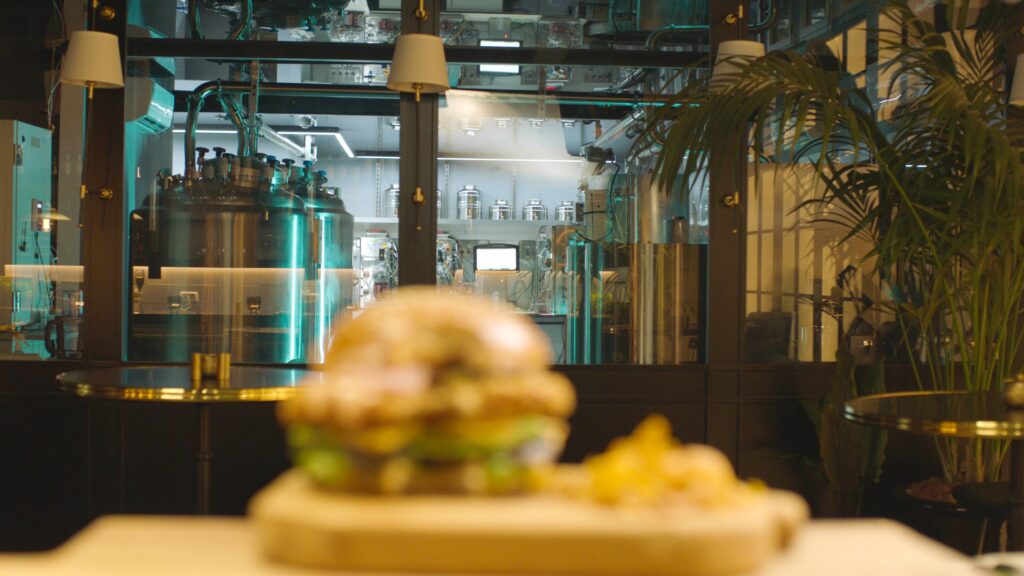Israeli Cultivated Meat Pioneer Reveals How It Can Produce Chicken At $12 Per Pound
5 Mins Read
Israeli startup SuperMeat has revealed how it can cut production costs of its cultivated chicken to under $12 per pound, on par with conventional poultry.
Just shy of its nine-year anniversary, Israeli food tech startup SuperMeat has made several breakthroughs to make its cultivated chicken at the same price as conventional versions.
In a 23-page report released last week, the company detailed how a combination of a highly stable cell line, a fully controlled animal-free media formulation, and rapid differentiation protocols have helped it achieve production costs of $11.8 per lb without depreciation (and $13.4 per lb with depreciation) at a 25,000-litre scale.
These costs are competitive with premium poultry products in the US, a key inflexion point for the startup as it gears itself towards a launch stateside.
“Current sentiment around cultivated meat includes scepticism regarding its scalability and market readiness, with concerns that cultivated meat may be more hype than a viable alternative,” said SuperMeat co-founder and CEO Ido Savir. “Our new report provides proof that with the right technology, there is a commercially viable path to market.”
The breakthroughs enabling SuperMeat to lower production costs

One of the earliest players in the cultivated meat sector, SuperMeat’s chicken comprises muscle and fat derived from animal cells. It begins its process by growing cell culture in a seeding bioreactor until it reaches high density, before being transferred to an expansion bioreactor.
The startup’s robust cell line – which has “strong self-renewal capabilities” – allows it to reach densities of 80 million cells per ml in just nine days. In a continuous production process, 30-50% of the culture is then transferred to differentiation bioreactors daily for 45 days, where the mass matures into muscle and fat tissue.
“Our lines originated from single-cell clones of embryonic stem cells. SuperMeat refined its ability to closely monitor and select the ideal clones, enabling the production process to rely on resilient clones that can achieve very high densities, and maintain these densities while they keep cycling,” explained CTO Yuval Levy-Peretz.
The muscle is produced in four days and fat in just 24 hours, and the use of embryonic stem cells nearly doubles the weight of these cells, slashing costs by over 40%. These tissues are crucial for delivering the nutritional profile, taste and texture people associate with conventional chicken, but with more efficient pricing when manufactured at scale.
The other breakthrough concerns cell feed, which makes up more than half of the cost of cultivated meat. SuperMeat has developed a high-throughput system that allows it to replace expensive animal-derived ingredients like serum and albumin with more affordable alternatives, resulting in media costs of under 50 cents per litre.
After six days in culture, the cells begin independently producing essential growth factors, enabling the startup to reduce the reduced feeding regimen of only 1.5 vessel volumes per day, which makes the entire process more efficient and cost-effective.
Price parity for cultivated meat front and centre
Once the muscle and fat tissues mature, the meat mass is harvested daily in the form of ground chicken that’s ready to be cooked. SuperMeat’s process requires minimal space and resources and produces three pounds of meat (the same as the yield from one chicken) in just two days, compared to the 42 days it takes to raise and process a chicken.
But when scaled to an industrial facility, it is expected to manufacture 6.7 million pounds (or three million kgs) of cultivated chicken annually – equivalent to around 2.7 million chickens – with 80% less land required. “These breakthroughs deliver the efficiency and yield required to achieve the cost parity of 100% cultivated meat at scale, bringing commercial cultivated meat production within reach,” said co-founder and communications chief Shir Friedman.
Cost is one of the most significant barriers preventing companies from reaching scales large enough to sell cultivated meat, and consumers from buying it once it’s on the market. McKinsey suggests that it’ll take until at least 2030 for these proteins to reach price parity with conventional meat, and that’s despite companies having brought down costs by 99% in less than a decade.
“We see a tremendous opportunity for affordable cultivated chicken meat that supplies the same delicious taste and nutrition as premium chicken, which is a path for consumer and market acceptance and long-term adoption,” said Savir.
The race to make cultivated meat more affordable has been heating up this year. Rehovot-based startup Believer Meats has described how its continuous process can potentially produce cultivated chicken for $6 per lb at scale, while fellow Israeli firm Forsea Foods has reached what it claims is an industry-leading cell density of 300 million cells per ml, making its cultivated unagi cheaper than conventional eel.
Another Israeli company, Ever After Foods, has developed a bioreactor platform that offers a 90% reduction in cultivated meat prices for its B2B clients. And pet food producers Meatly and BioCraft Pet Nutrition have drastically reduced the prices of their culture media.

It’s also important to note that SuperMeat’s techno-economical analysis centred around cultivated chicken made just from muscle and fat, but most cultivated meat products currently on the market feature a blend of animal cells and plant-based ingredients.
For example, Good Meat’s chicken – the only cultivated meat currently found in supermarkets – has a retail price equivalent to over $20 per pound, but cultivated cells only make up 3% of the product. This demonstrates the potential for SuperMeat to further reduce prices when it eventually enters the market.



